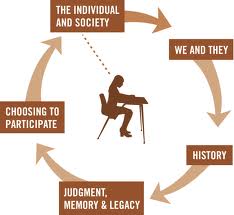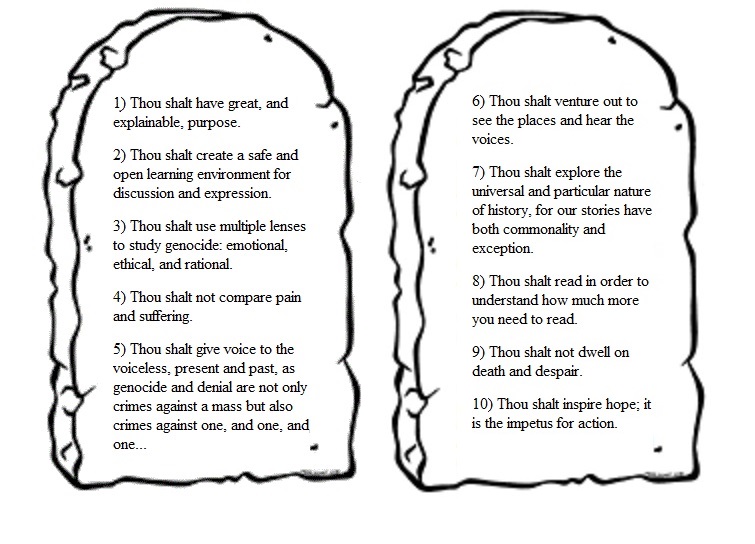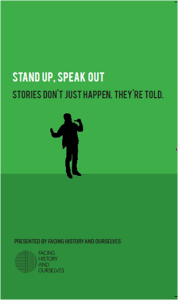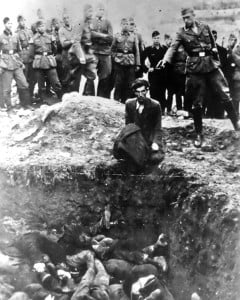As you may have read in other blogs, the “Stand Up, Speak Out” event was an incredible evening of sharing and community. For me it served to exemplify, and personify, the Scope and Sequence of Facing History and Ourselves. On that evening, half a dozen of my students took the stage along with students from three other southern Ontario schools to perform their spoken word pieces. The performances were broken down into the five steps of the Facing History Scope and Sequence:
Topics: Choosing to Participate, Facing History Resources, Identity, History, Urban Education, project, We and They, Strategies, Culturally Responsive and Relevant Pedagogy, genocide, legacy, Genocide and Crimes Against Humanities Course, Holocaust and Human Behaviour, CHG, reflection
We always say that Canada is a young country, but that never hits home till you come to Europe. Here I am in Krakow, the old imperial capital of Poland, whose existence is first mentioned by a Jewish merchant in 965 CE. A city gradually grew on this important trade route near the important salt mines of Bochnia, which would eventually account for 30% of Poland's national income in the 15th and 16th centuries.
Topics: History, Memorial, Genocide and Crimes Against Humanities Course
After a year of learning about Genocide and Crimes Against Humanity, students gravitate towards complex and profound questions that are increasingly difficult to answer. In a setting that involves teaching at-risk youth, this type of engagement can be frustratingly elusive. The lesson (content wise) that I will share with you today is one that should not stand alone. This took place in class after having done 3 case studies, including Rwanda, and a unit on concepts of Justice and Memorial. I found that this lesson was very successful at engaging students of all stripes through particular stories of perpetrators to try to gain a better understanding of universal questions of guilt, responsibility, reconciliation, and justice.
Topics: Facing History Resources, History, Urban Education, Strategies, genocide, Genocide and Crimes Against Humanities Course, Lesson Ideas, big paper, CHG
IWitness Archive Gives Voice to Holocaust Witnesses: Free Webinars and Student Contest
Facing History Offers IWitness Webinars for Teachers May 9 and May 14 2013
In May 2013, Facing History will offer two free webinars for educators on powerful ways to use the IWitness tool.
Topics: Events, History, Innovative Classrooms, Media Skills, Holocaust Education, Genocide and Crimes Against Humanities Course
Making Breakthroughs: Using Spoken Word Poetry to Teach History
Posted by Jasmine Wong on April 22, 2013
An innovative new collaboration taking place in Canada this spring is connecting classrooms and teaching students literacy and performance skills through the study of history and spoken word poetry. “Stand Up, Speak Out,” a four-week program designed by Facing History and Ourselves, is bringing professional spoken word artists into Grade 11 classrooms as part of a unit of study that explores the history of genocide and issues of identity, tolerance, and community.
Topics: Genocide and Crimes Against Humanities Course, Lesson Ideas, Literature
Avoiding Victimhood: enticing our students to think critically about Genocide
Posted by Jack Lipinsky on April 21, 2013
My last couple of posts have focused on the educational methodology of teaching media savvy students how to examine visual evidence of the Shoah. I have recorded some of our class conversations and you must wonder: what is the atmosphere like in this classroom? Is it terribly negative considering what is being learned? Mustn't it be especially upsetting for students in a Jewish day school to learn the horrific details of the Shoah, the Holocaust, that wiped out an entire Eastern European civilization? My students find this study enlightening and are not depressed but eager to learn more and empowered by what they discover. I would like to share how this can be done. For me, this is an issue that transcends ethnicity, nationality, or religion. How are students affected by learning about genocidal attempts that strike 'close to home"? Let me begin with a story that exemplifies what Facing History is all about.
Topics: Professional Development, Genocide and Crimes Against Humanities Course
As my students build their journals, ideas of injustice and intolerance flood their pages. Yet this month, the pens are down and students of Genocide are standing up and speaking out. Mathew Jones A.K.A “TESTAMENT” provided Waterdown students with the tools and the inspiration to put their thoughts into Spoken Word Art.
Topics: Art, Events, Innovative Classrooms, Memorial, Genocide and Crimes Against Humanities Course, Personal history
"The Last Jew in Vinnitsa": How Media provides a way to understand Perpetrators/Bystanders/Victims
Posted by Jack Lipinsky on April 7, 2013
Graphic imagery is used in this lesson. Please read the full post before teaching this.
I start by displaying the famous photo called "The Last Jew in Vinnitsa."
I say, "This was the title given by the Einsatzgrup soldier in whose pocket it was found, scribbled on the back. Vinnitsa is a small town in the Ukraine whose entire Jewish population was wiped out by the Einsatzgruppen mass killing methods in 1941."
This is all I tell my students when displaying this picture. They have already learned about the Einsatzgruppen and read the selection on "Battalion 101" in Holocaust and Human Behaviour Chapter 7 Reading 3 . They have also been taught that there are three groups involved in genocide: perpetrators, bystanders, and victims.
Topics: History, The Last Jew in Vinnitsa, genocide, Genocide and Crimes Against Humanities Course, Lesson Ideas, reflection
Using Visual Media to Learn about Genocide--OR--Goodbye "boring" History classes
Posted by Jack Lipinsky on April 7, 2013
In my last post I noted how saturated our students are by visual media. What a sharp contrast their lives are with mine at their age. In my high school history classes, the walls were adorned with old men, mostly with mutton chop whiskers and beards, staring down at me. Each of them had their name, dates of birth and death, and a sour stare that intimidated me when I glanced at them. My teachers reverently cited these old mens' careers and quoted them to the point of endless boredom.
Topics: History, Middle School, Strategies, Genocide and Crimes Against Humanities Course, Lesson Ideas






